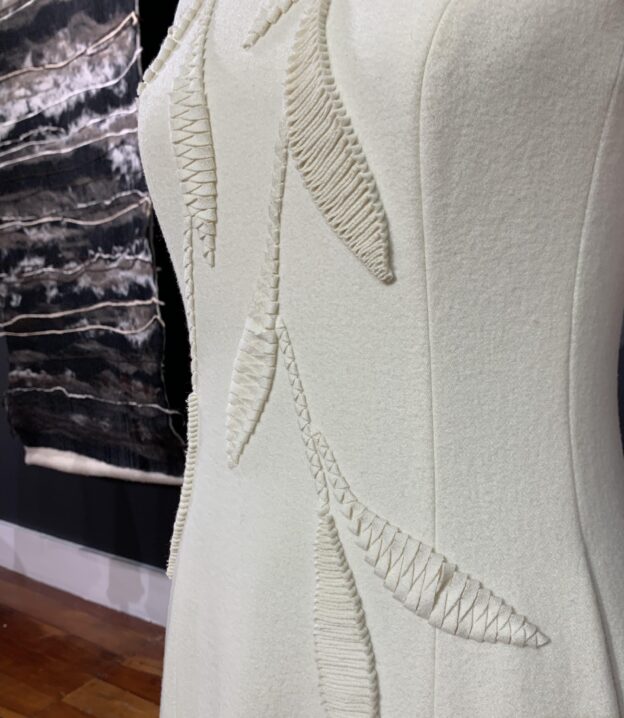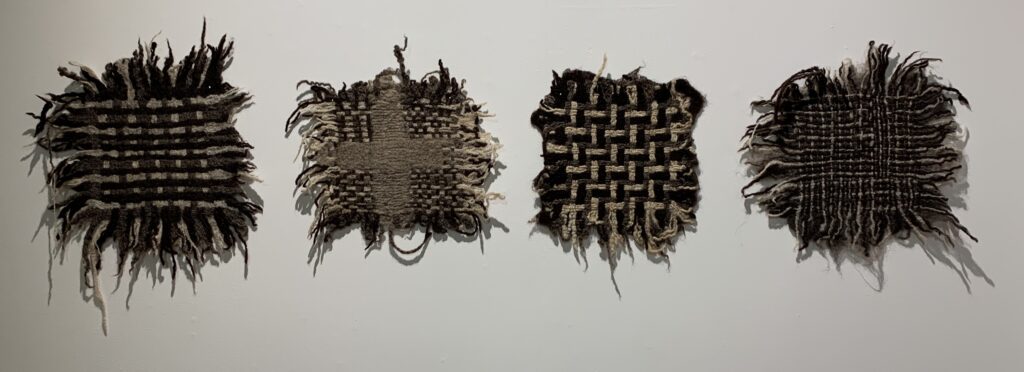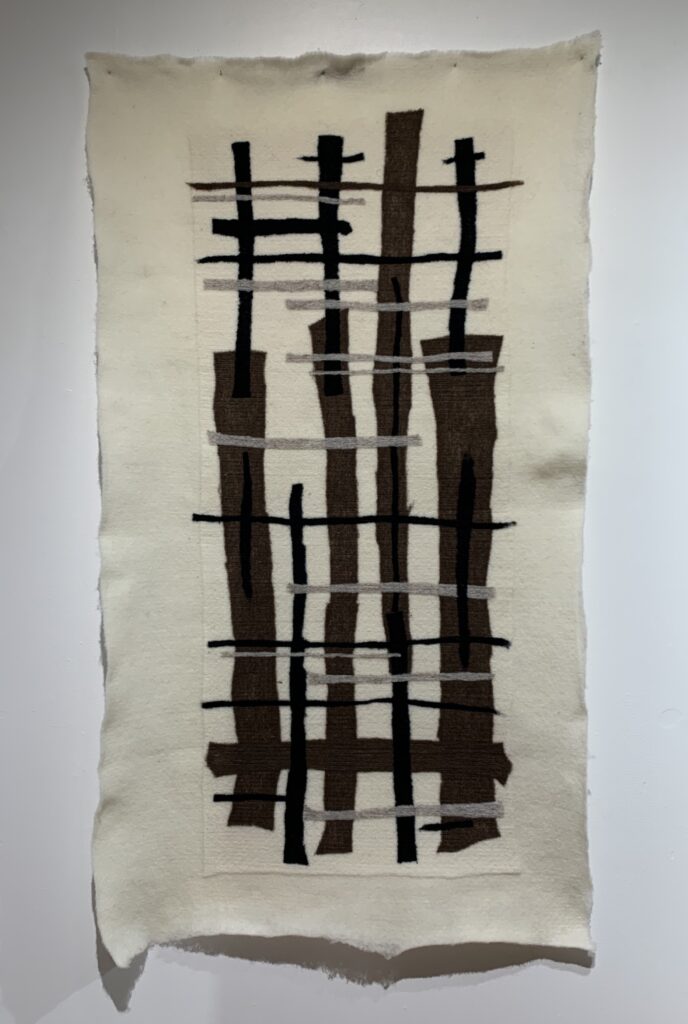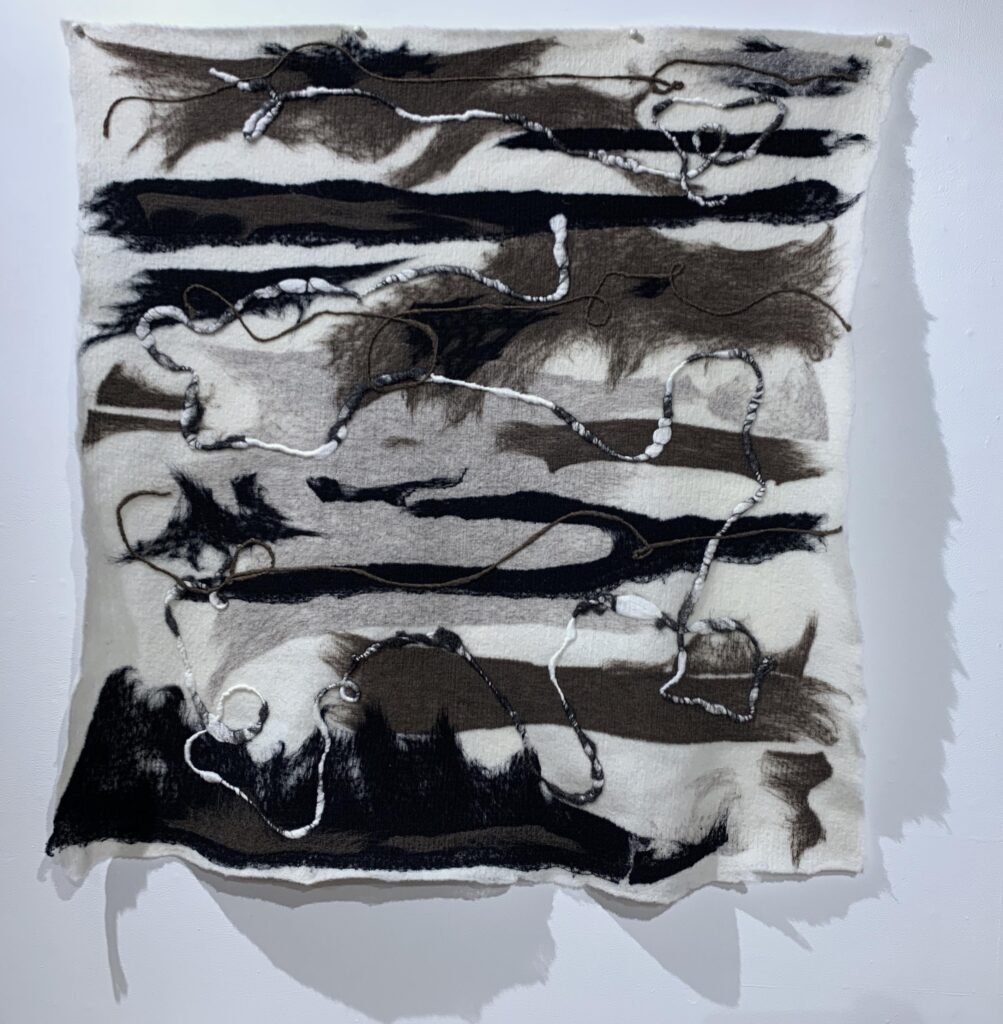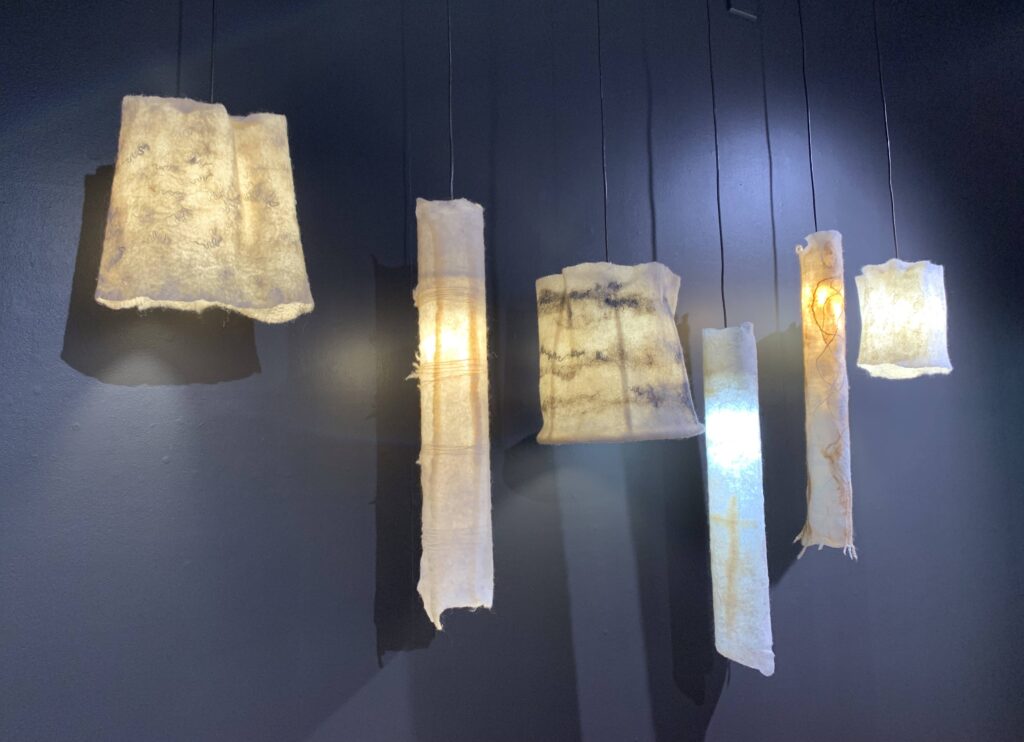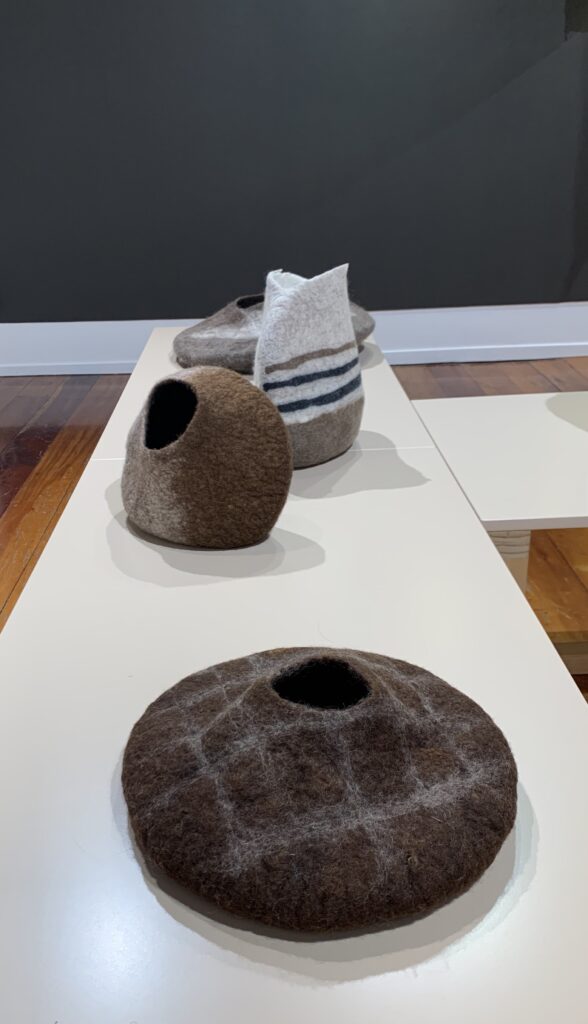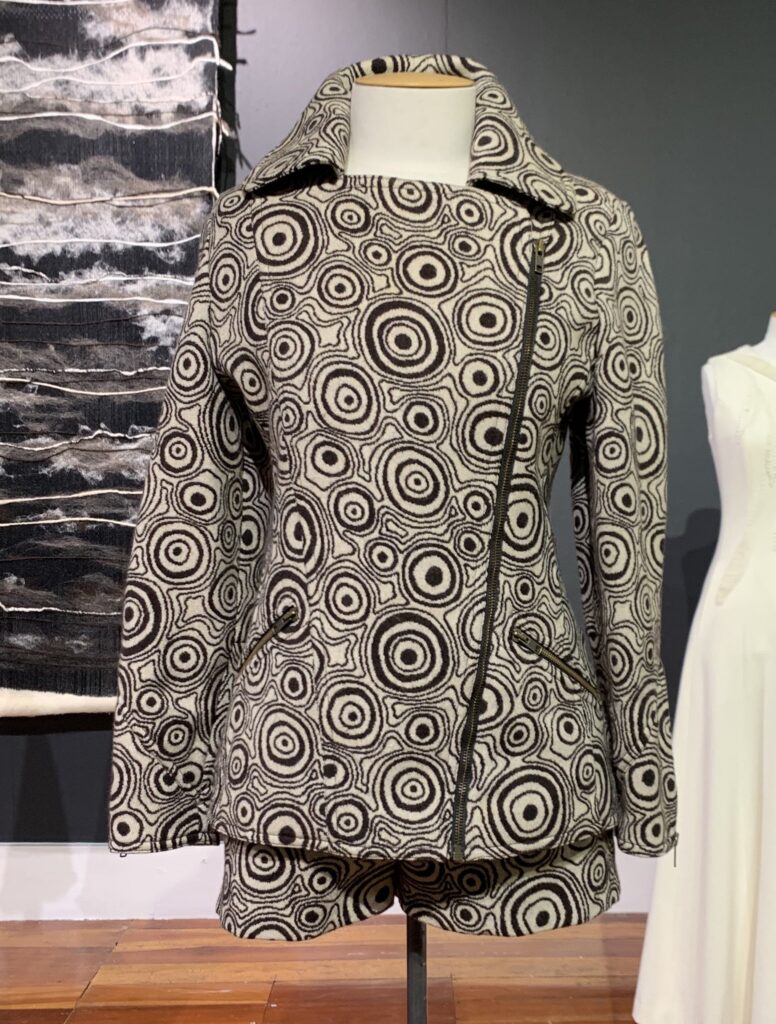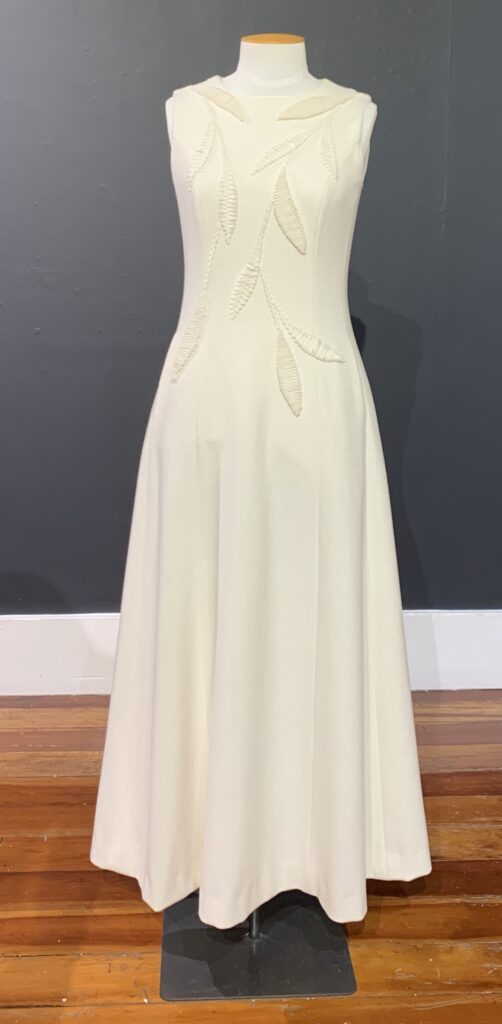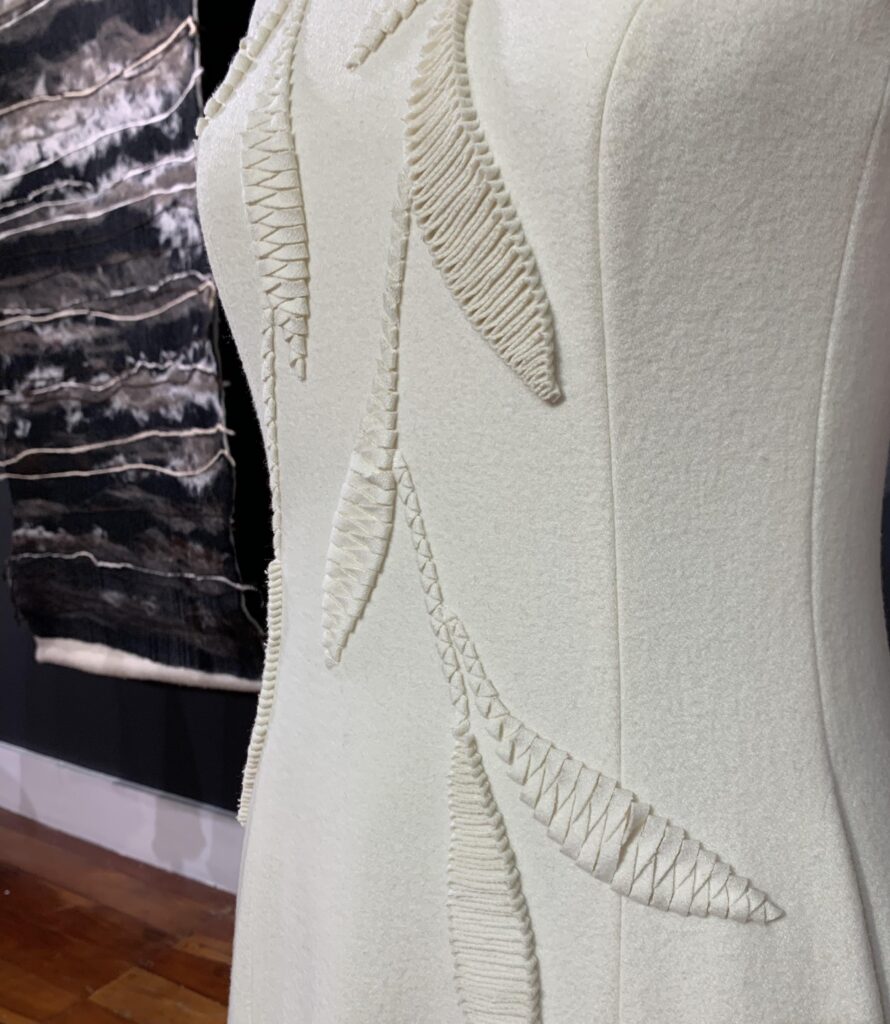Last week I was incredibly fortunate to visit the Guo Pei exhibition at Auckland Art Gallery with two friends from Auckland Felters. I’m ashamed to admit, that up until a few weeks ago, I had never heard of her, the social media frenzy that surrounded Rihanna’s appearance in the “Imperial Yellow” gown completely bypassed my feeds.
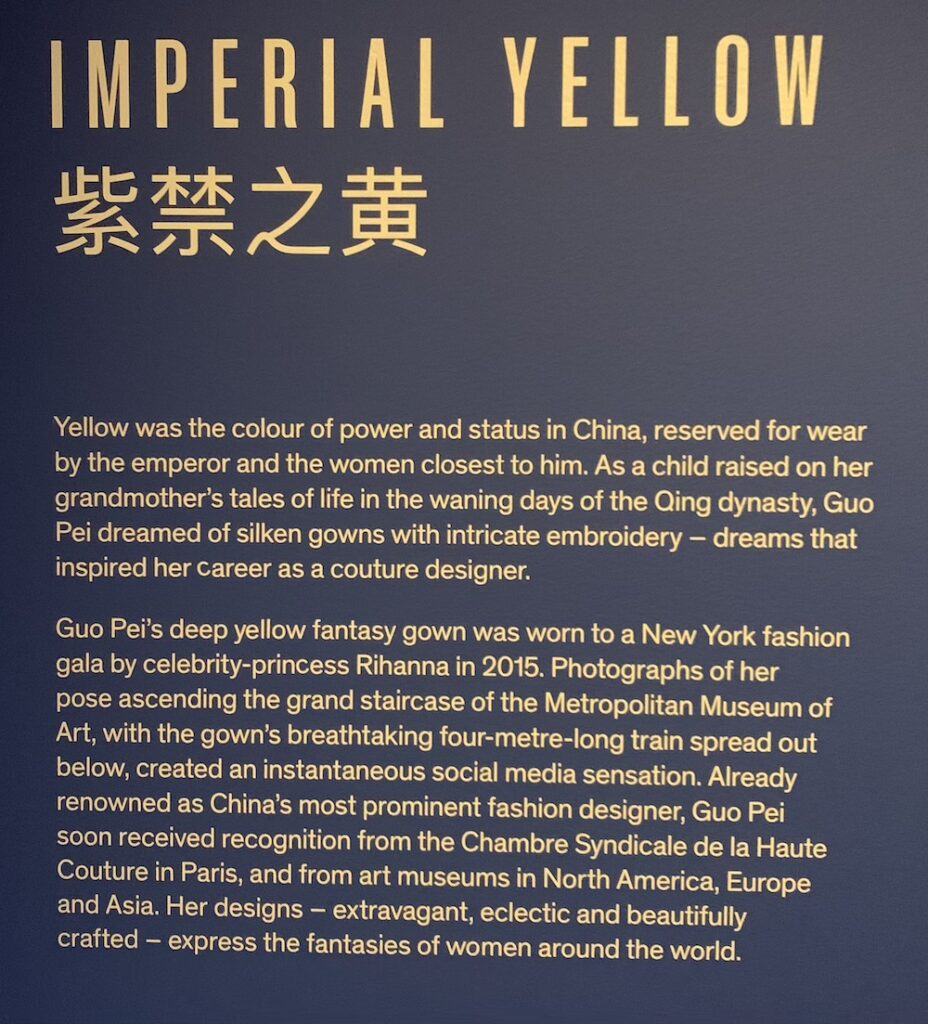
Despite the media hype around it, this dress didn’t even make my favourite top ten from this exhibition. Don’t get me wrong, the Imperial Yellow dress was beautiful and very intricately embroidered but the standard of all the dresses / gowns in this exhibition was genuinely mind-blowing, it was like being able to walk amongst a World of Wearable Arts show. A week later and my head is still buzzing with inspiration….
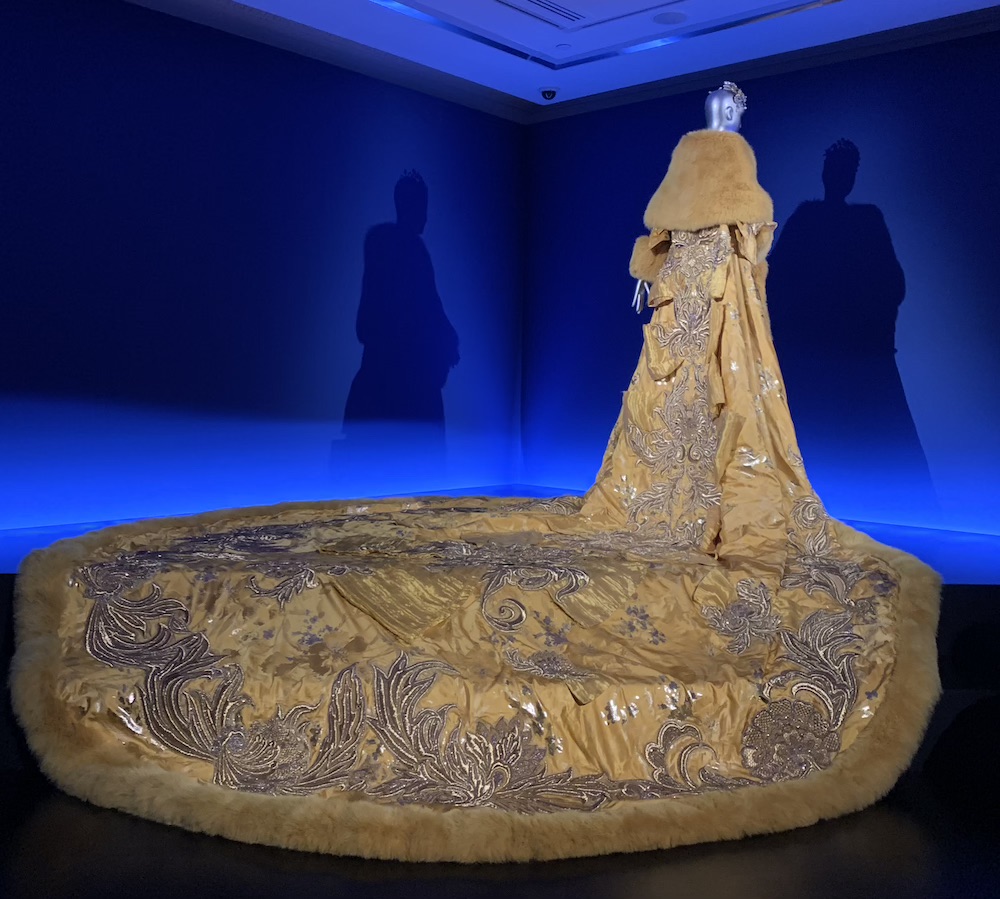
Guo Pei’s story is as fascinating as the engineering behind her dresses. Growing up in communist China, fashion did not exist, so when she announced that she wanted to be a fashion designer everyone thought she wanted to be a seamstress, the concept that the shape and silhouette of clothing could be altered was not commonplace in China in the 1970’s and 80’s.
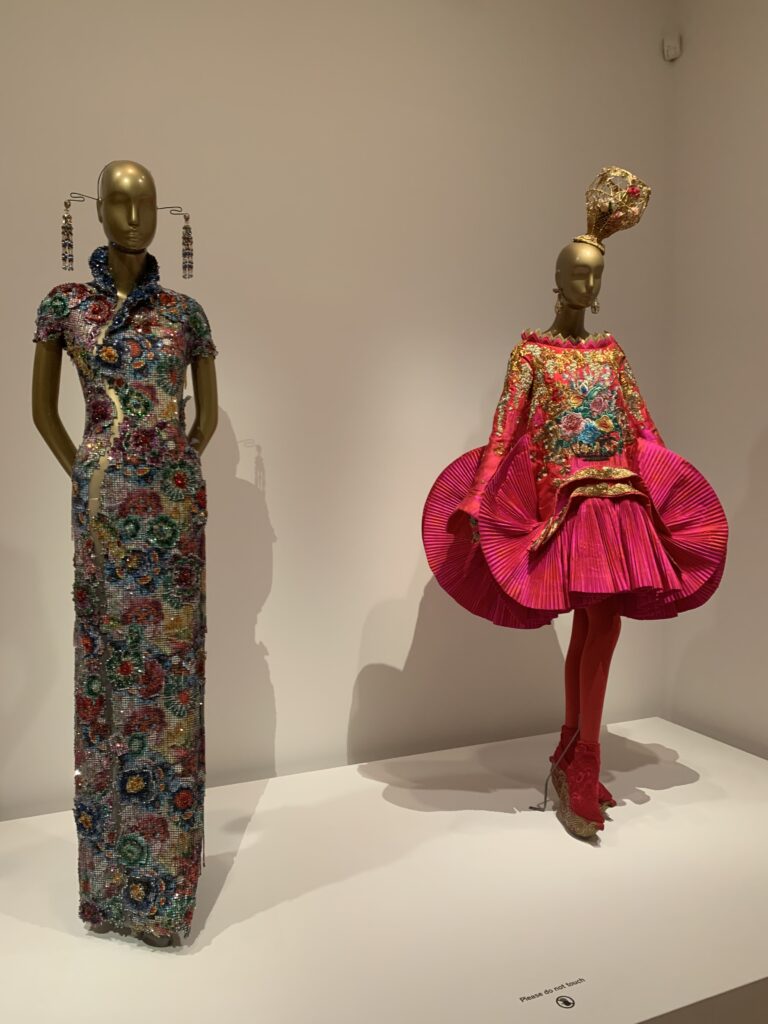
Added to that, China in the 70’s and 80’s was a very patriarchal society, women were not expected to be entrepreneurs, if they worked outside the home / domestic setting it was as an employee not an employer, making Guo Pei’s journey to owning her own fashion house all the more remarkable.

Sadly, it appears the hundreds of artisans who worked on bringing her designs to life, were not well paid, especially in the early days. Hopefully, the notoriety Guo Pei is receiving now will be reflected in the wages paid to her extremely talented embroiderers and seamstresses.
The attention to detail in each ensemble was impressive. Each gown had its own accessories and shoes which were works of art in their own right. However, I imagine some of the shoes would be like walking on stilts 🙂
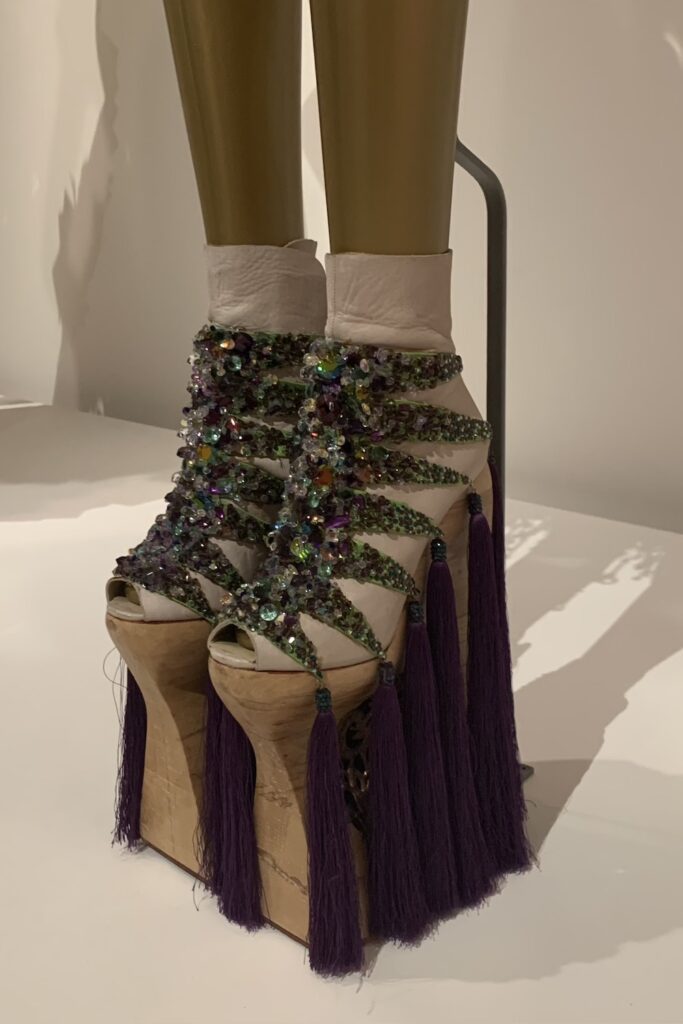
I wouldn’t normally advocate taking photos up someone’s skirt but at this exhibition it is a must. I think the organisers missed a trick not putting mirrors on the floor under some of the dresses as the workmanship inside the skirts is amazing. The detailed beading and embroidery we see on the outside doesn’t stop at the hem.
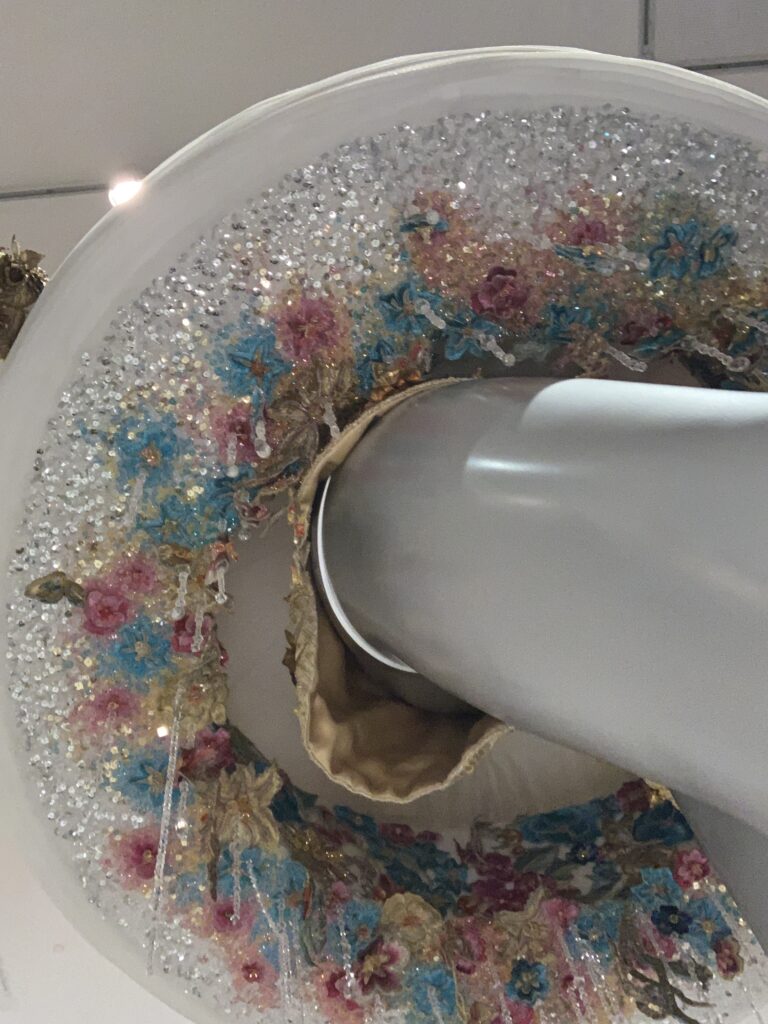
This dress was intriguing, viewed from the side the model appears to be very pregnant but from the front you are presented with a hollow but inflated skirt….
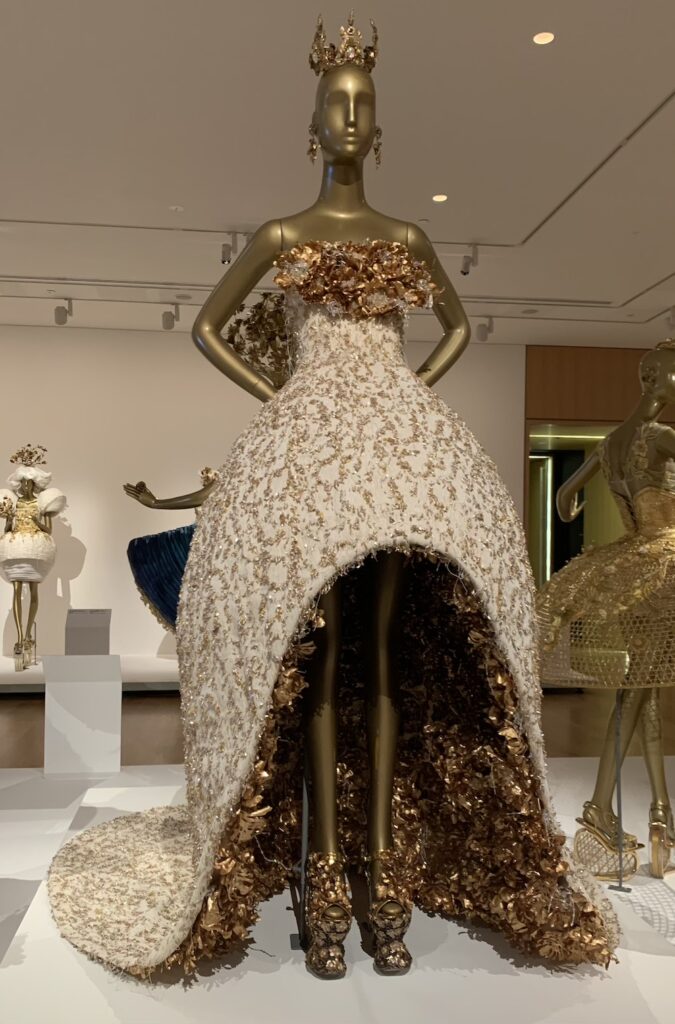
That is filled on the inside with hundreds of golden flowers…
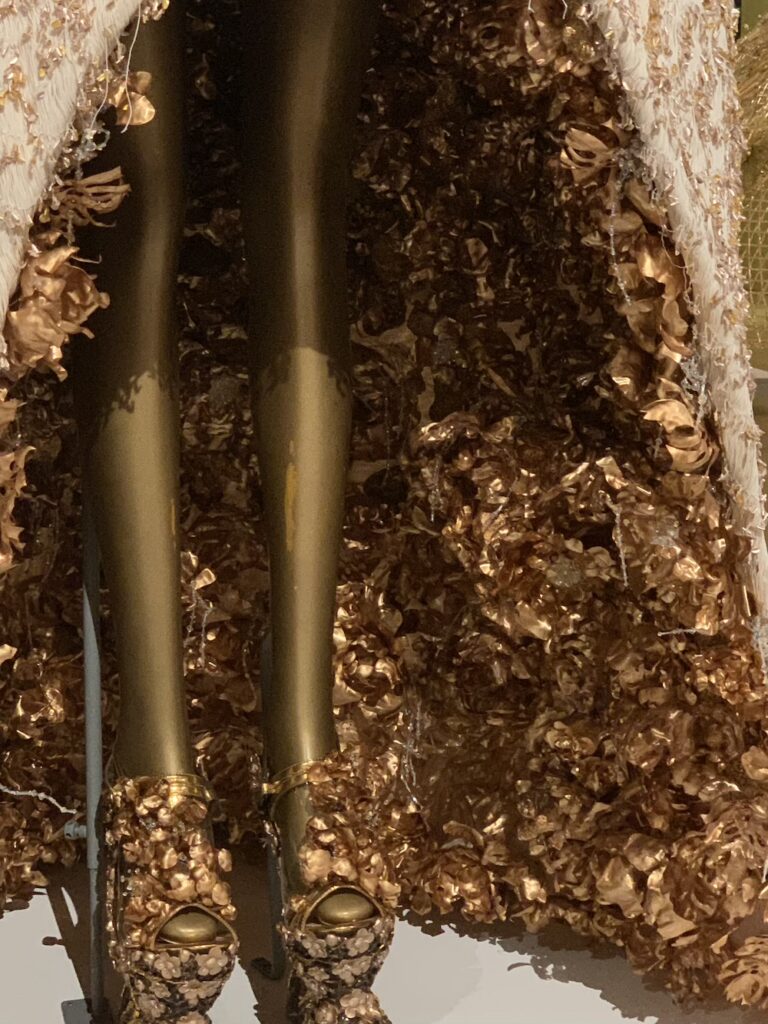
I’m not sure if Guo Pei was trying to make a statement (I see soft, opulent petals in a voided pregnancy) with this dress but this idea of presenting two very different faces on the same garment fascinates me.
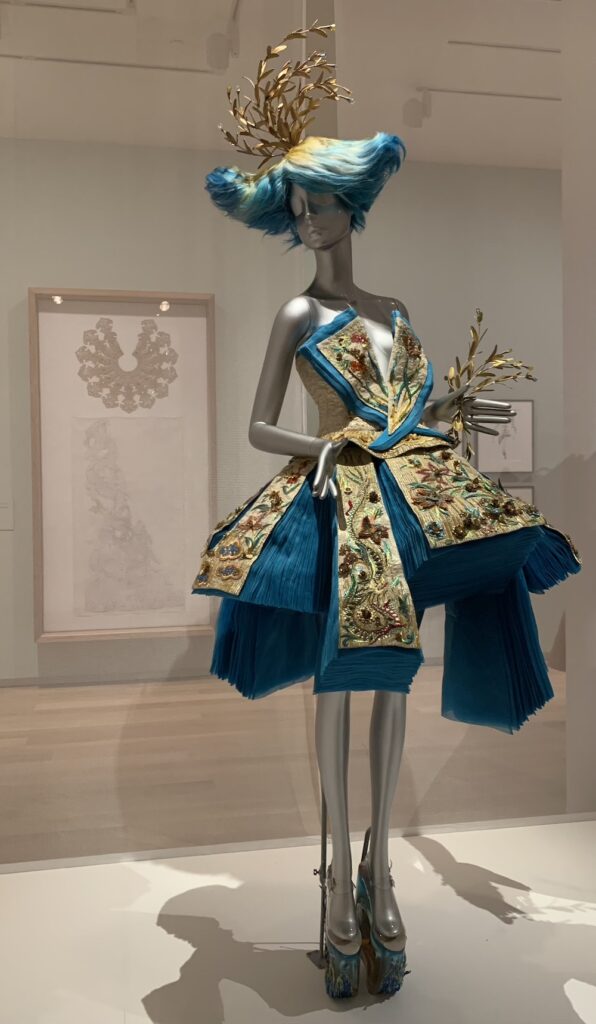
Some of the gowns were definitely more Art than Wearable…
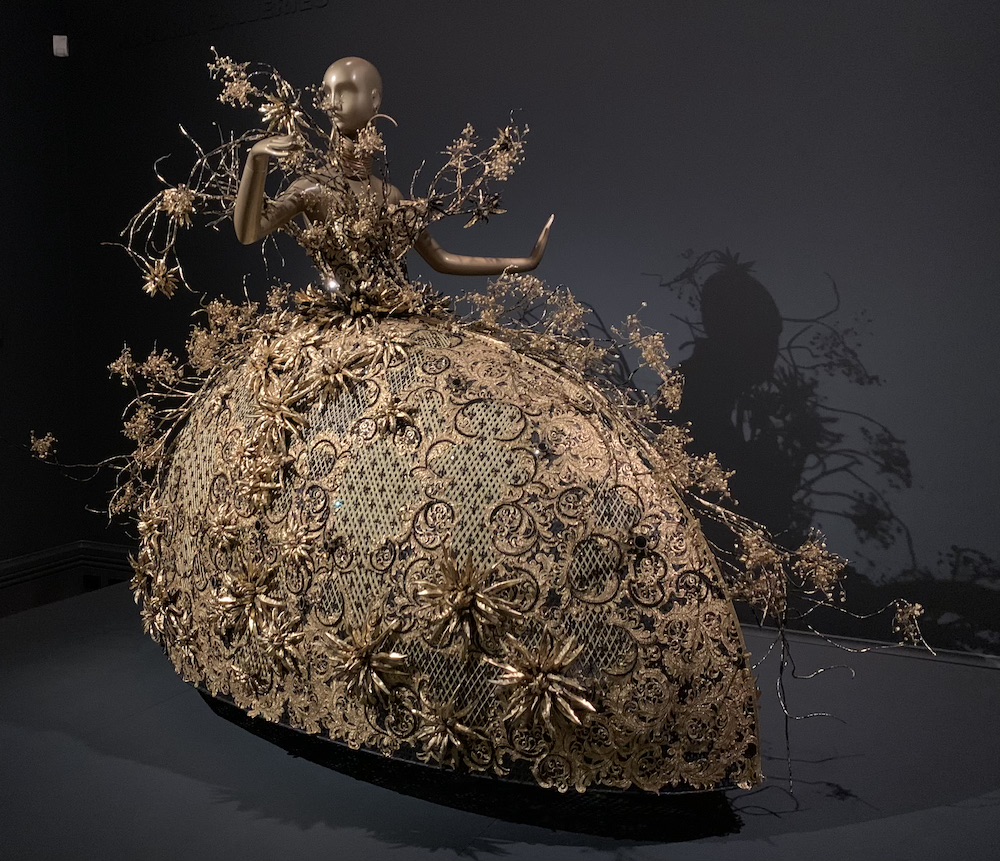
The V at the front and silhouette created by the wide skirts of this dress kept luring me back to look at it. I feel the need to use this as inspiration for something but I’m not quite sure what yet….
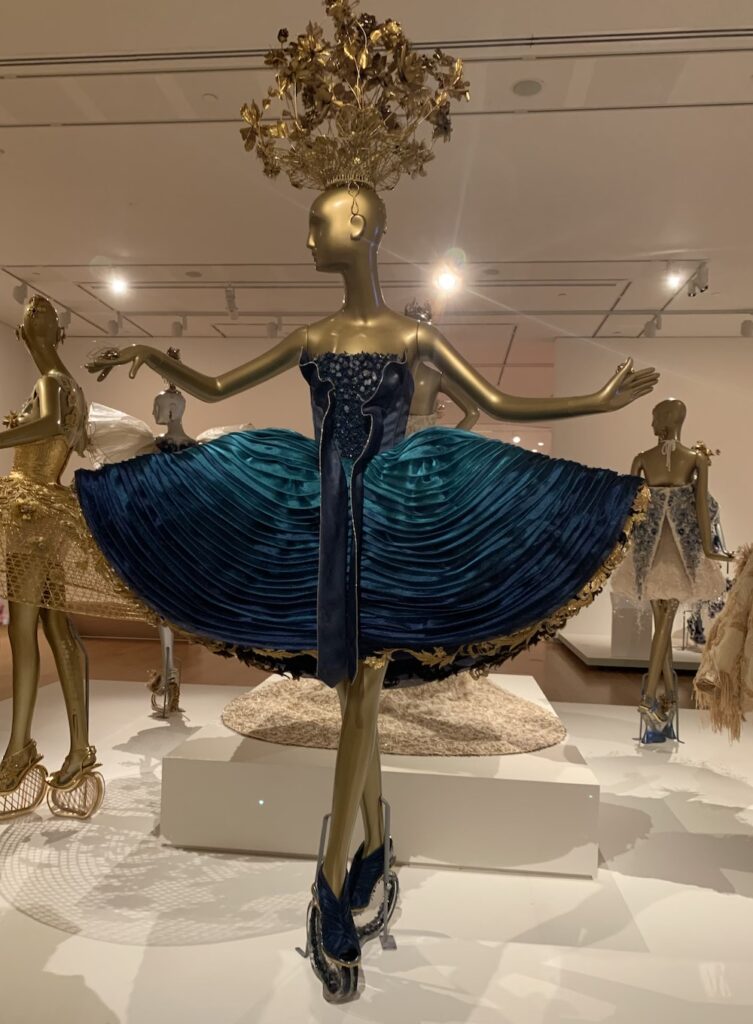
I was equally fascinated by the engineering behind some of the dresses as I was by the beautiful designs and forms created. This voluminous skirt appears to be constructed from threading a flexible rod through a channel sewn into the fabric, creating a continuous coil that was attached at the waist.
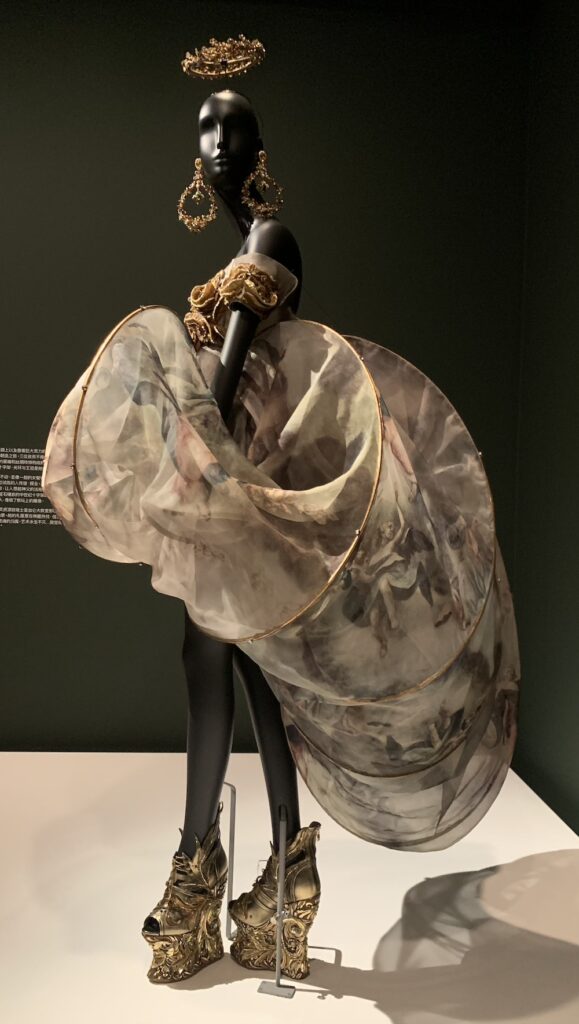
Sadly we were not allowed to touch the dresses (there were attendants in every room making sure we did not get too close) but oh how I wanted to feel the fabrics and look more closely at how each dress was constructed!
If you get the opportunity, this really is a MUST SEE exhibition, I know a few people who have been to see it several times already!
Merry Kerihimete!
(Merry Christmas!)
Wishing you a joyful and creative New Year

